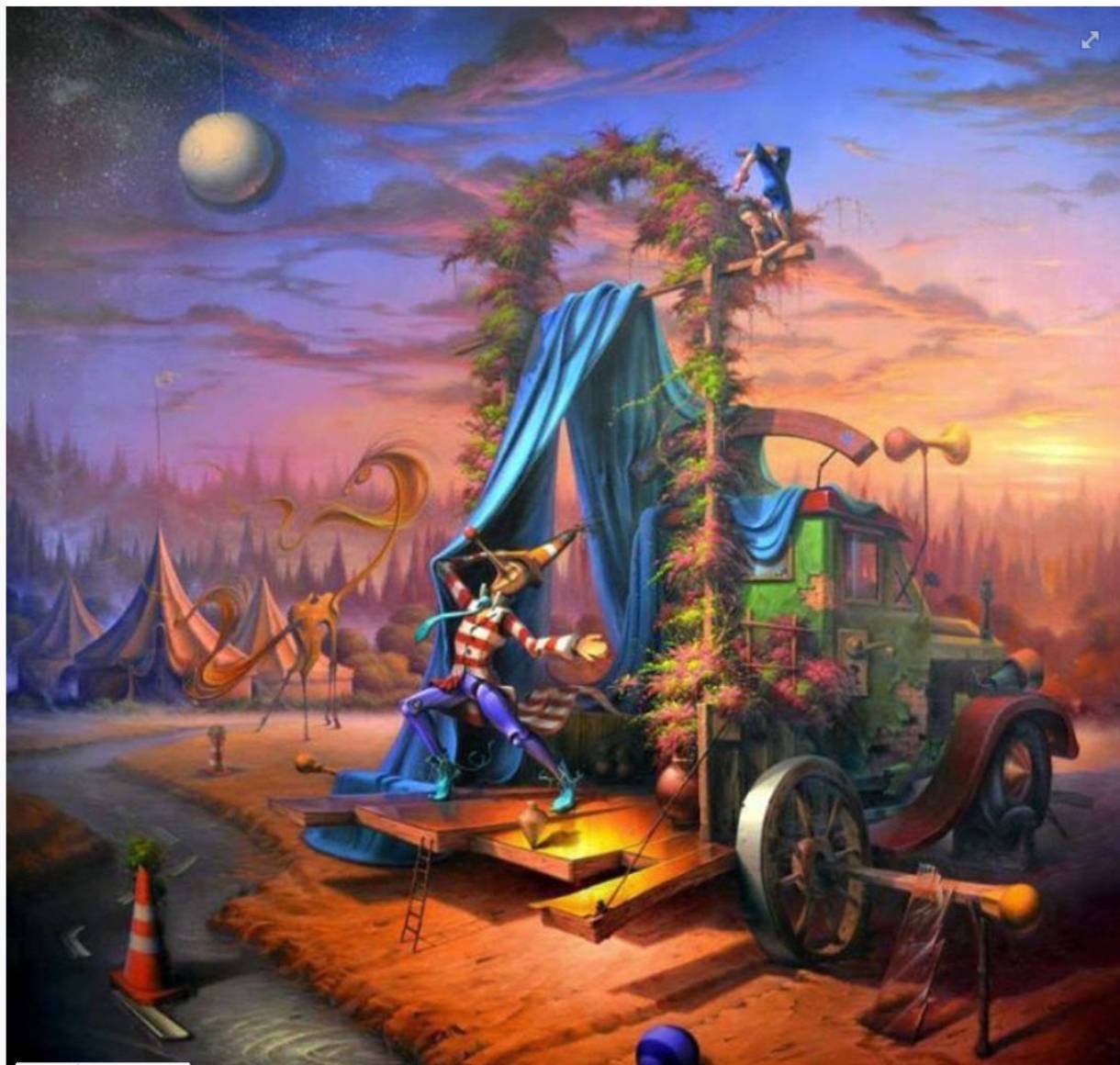The Curious Name Origins of World-Famous Vacation Destinations
As we enter the summer, you might be planning a big trip to have some fun during your summer vacation. If you want to gallivant across the globe, there’s no shortage of beautiful places full of interesting history to explore. And it’s worth noting. Many cities around the world have fascinating stories about where their names came from. Before you finalize summer travel plans, we’re passing along some of the cool stories about the origins of the names of cities around the world.
London, England
Historical sources trace London’s name back to when the Romans first founded it in 43 CE and named the new settlement Londinium. Beyond that, though, there is heated debate on where the Romans got this name from. One common theory says that the name comes from King Lud, a mythical pre-Roman British king. Another theory suggests that the Romans took the name from the Celtic word Plowonida, which means “from two roots.”
Rio de Janeiro, Brazil
Rio de Janeiro translates to “January River” in English despite the fact that the city is located next to a bay and not a river. The popular story goes that when Portuguese explorers found the Guanabara Bay in the early 1500s, they mistook it for a large river and named the new settlement there after the “river.”
Cuzco, Peru
The name of the city of Cuzco, or Cusco, comes from the Quechua language and is said to mean “navel.” The city of Cuzco was the central city and the capital of the Inca empire. Cuzco is still often referred to as “The Navel of the Earth” to highlight its historical importance.
Mumbai, India
For the Marathi speakers who live there, the city of Mumbai takes its name from Mumbadevi, the patron goddess of the city. When India was under the control of the British Empire, the city was known as Bombay. The name Bombay is said to be an anglicized version of the earlier Portuguese name Bom Bahia, which meant “good little bay.”
Cairo, Egypt
The official Arabic name of the city known in English as Cairo is Al-Qāhirah. This name translates to “The Victorious” or “The Conqueror.” This powerful name is said to refer to Caliph al-Muʿizz, who established the city as the capital of the Fatimid Caliphate that would control Egypt for centuries afterward.
Istanbul, Turkey
The city of Istanbul can trace its name back to the Ottoman Empire. Originally known as Constantinople (for Roman emperor Constantine the Great), the city belonged to the Eastern Roman Empire but was captured by Ottoman forces in 1453. Although the Ottomans didn’t officially rename Constantinople, citizens outside the city began to refer to it using the Turkish name Istanpolin, based on a Greek phrase eis tan polin meaning “into the city.” Going back even further, the city was known as Byzantium. It is thought that the city was originally named for Byzas, a legendary Greek king who is said to have founded the city.
Phnom Penh, Cambodia
According to legend, Phnom Penh was founded by a woman known as Lady Penh or Duan Penh. During her life, Lady Penh built a shrine on a hill. That shrine, referred to as Wat Phnom, is said to still be standing today. Cambodia’s capital Phnom Penh takes its name both from Wat Phnom and Lady Penh.
Bangkok, Thailand
In Thai, the city of Bangkok is officially known by a much longer name that is often shortened to Krung Thep, which translates to “city of angels.” The city’s official name, at 168 letters, actually holds the record for the longest place name in the world. The exact origin of the English Bangkok is disputed, but it may be based on native Thai words for “city” and an olive-like fruit (makok).
Jerusalem, Israel
The holy city of Jerusalem, known as Yerushalayim in Hebrew and Al-Quds in Arabic, has a long history of religious prominence and conflict. The origins of the ancient city are still being researched today, but evidence says that the Egyptians knew of the city as early as the 14th century BCE. They referred to the city as Urusalim, a Semitic name that seems to translate to “city of Shalim,” referring to the Canaanite god Shalim, also known as Shalem or Salim.
Marrakesh, Morocco
The origin of the name of Marrakesh or Marrakech is still disputed today. The most popular interpretation says that the name comes from the Berber language and means “city of God” from the Berber amur akush.
Johannesburg, South Africa
It is agreed that Johannesburg, the largest city of South Africa, was likely named after a person or multiple named Johan or Johannes. Who exactly this person or these people were is still a matter of debate. Some popular picks include Johann Rissik and Christiaan Johannes Joubert, two early surveyors of southern Africa, and Stephanus Johannes Paulus Kruger, a president of the South African Republic.
Of course, these are just some of the name tales of the many great vacation destinations around the world. There are many other cities out there with fascinating stories on where their names came from. Personally, we might book our next trip to Wales and learn about the story behind Llanfairpwllgwyngyllgogerychwyrndrobwllllantysiliogogogoch … after we spend the summer learning how to pronounce it first!
สงวนลิขสิทธิ์ © 2025 AAKKHRA & Co.
As we enter the summer, you might be planning a big trip to have some fun during your summer vacation. If you want to gallivant across the globe, there’s no shortage of beautiful places full of interesting history to explore. And it’s worth noting. Many cities around the world have fascinating stories about where their names came from. Before you finalize summer travel plans, we’re passing along some of the cool stories about the origins of the names of cities around the world.
London, England
Historical sources trace London’s name back to when the Romans first founded it in 43 CE and named the new settlement Londinium. Beyond that, though, there is heated debate on where the Romans got this name from. One common theory says that the name comes from King Lud, a mythical pre-Roman British king. Another theory suggests that the Romans took the name from the Celtic word Plowonida, which means “from two roots.”
Rio de Janeiro, Brazil
Rio de Janeiro translates to “January River” in English despite the fact that the city is located next to a bay and not a river. The popular story goes that when Portuguese explorers found the Guanabara Bay in the early 1500s, they mistook it for a large river and named the new settlement there after the “river.”
Cuzco, Peru
The name of the city of Cuzco, or Cusco, comes from the Quechua language and is said to mean “navel.” The city of Cuzco was the central city and the capital of the Inca empire. Cuzco is still often referred to as “The Navel of the Earth” to highlight its historical importance.
Mumbai, India
For the Marathi speakers who live there, the city of Mumbai takes its name from Mumbadevi, the patron goddess of the city. When India was under the control of the British Empire, the city was known as Bombay. The name Bombay is said to be an anglicized version of the earlier Portuguese name Bom Bahia, which meant “good little bay.”
Cairo, Egypt
The official Arabic name of the city known in English as Cairo is Al-Qāhirah. This name translates to “The Victorious” or “The Conqueror.” This powerful name is said to refer to Caliph al-Muʿizz, who established the city as the capital of the Fatimid Caliphate that would control Egypt for centuries afterward.
Istanbul, Turkey
The city of Istanbul can trace its name back to the Ottoman Empire. Originally known as Constantinople (for Roman emperor Constantine the Great), the city belonged to the Eastern Roman Empire but was captured by Ottoman forces in 1453. Although the Ottomans didn’t officially rename Constantinople, citizens outside the city began to refer to it using the Turkish name Istanpolin, based on a Greek phrase eis tan polin meaning “into the city.” Going back even further, the city was known as Byzantium. It is thought that the city was originally named for Byzas, a legendary Greek king who is said to have founded the city.
Phnom Penh, Cambodia
According to legend, Phnom Penh was founded by a woman known as Lady Penh or Duan Penh. During her life, Lady Penh built a shrine on a hill. That shrine, referred to as Wat Phnom, is said to still be standing today. Cambodia’s capital Phnom Penh takes its name both from Wat Phnom and Lady Penh.
Bangkok, Thailand
In Thai, the city of Bangkok is officially known by a much longer name that is often shortened to Krung Thep, which translates to “city of angels.” The city’s official name, at 168 letters, actually holds the record for the longest place name in the world. The exact origin of the English Bangkok is disputed, but it may be based on native Thai words for “city” and an olive-like fruit (makok).
Jerusalem, Israel
The holy city of Jerusalem, known as Yerushalayim in Hebrew and Al-Quds in Arabic, has a long history of religious prominence and conflict. The origins of the ancient city are still being researched today, but evidence says that the Egyptians knew of the city as early as the 14th century BCE. They referred to the city as Urusalim, a Semitic name that seems to translate to “city of Shalim,” referring to the Canaanite god Shalim, also known as Shalem or Salim.
Marrakesh, Morocco
The origin of the name of Marrakesh or Marrakech is still disputed today. The most popular interpretation says that the name comes from the Berber language and means “city of God” from the Berber amur akush.
Johannesburg, South Africa
It is agreed that Johannesburg, the largest city of South Africa, was likely named after a person or multiple named Johan or Johannes. Who exactly this person or these people were is still a matter of debate. Some popular picks include Johann Rissik and Christiaan Johannes Joubert, two early surveyors of southern Africa, and Stephanus Johannes Paulus Kruger, a president of the South African Republic.
Of course, these are just some of the name tales of the many great vacation destinations around the world. There are many other cities out there with fascinating stories on where their names came from. Personally, we might book our next trip to Wales and learn about the story behind Llanfairpwllgwyngyllgogerychwyrndrobwllllantysiliogogogoch … after we spend the summer learning how to pronounce it first!
สงวนลิขสิทธิ์ © 2025 AAKKHRA & Co.
The Curious Name Origins of World-Famous Vacation Destinations
As we enter the summer, you might be planning a big trip to have some fun during your summer vacation. If you want to gallivant across the globe, there’s no shortage of beautiful places full of interesting history to explore. And it’s worth noting. Many cities around the world have fascinating stories about where their names came from. Before you finalize summer travel plans, we’re passing along some of the cool stories about the origins of the names of cities around the world.
London, England
Historical sources trace London’s name back to when the Romans first founded it in 43 CE and named the new settlement Londinium. Beyond that, though, there is heated debate on where the Romans got this name from. One common theory says that the name comes from King Lud, a mythical pre-Roman British king. Another theory suggests that the Romans took the name from the Celtic word Plowonida, which means “from two roots.”
Rio de Janeiro, Brazil
Rio de Janeiro translates to “January River” in English despite the fact that the city is located next to a bay and not a river. The popular story goes that when Portuguese explorers found the Guanabara Bay in the early 1500s, they mistook it for a large river and named the new settlement there after the “river.”
Cuzco, Peru
The name of the city of Cuzco, or Cusco, comes from the Quechua language and is said to mean “navel.” The city of Cuzco was the central city and the capital of the Inca empire. Cuzco is still often referred to as “The Navel of the Earth” to highlight its historical importance.
Mumbai, India
For the Marathi speakers who live there, the city of Mumbai takes its name from Mumbadevi, the patron goddess of the city. When India was under the control of the British Empire, the city was known as Bombay. The name Bombay is said to be an anglicized version of the earlier Portuguese name Bom Bahia, which meant “good little bay.”
Cairo, Egypt
The official Arabic name of the city known in English as Cairo is Al-Qāhirah. This name translates to “The Victorious” or “The Conqueror.” This powerful name is said to refer to Caliph al-Muʿizz, who established the city as the capital of the Fatimid Caliphate that would control Egypt for centuries afterward.
Istanbul, Turkey
The city of Istanbul can trace its name back to the Ottoman Empire. Originally known as Constantinople (for Roman emperor Constantine the Great), the city belonged to the Eastern Roman Empire but was captured by Ottoman forces in 1453. Although the Ottomans didn’t officially rename Constantinople, citizens outside the city began to refer to it using the Turkish name Istanpolin, based on a Greek phrase eis tan polin meaning “into the city.” Going back even further, the city was known as Byzantium. It is thought that the city was originally named for Byzas, a legendary Greek king who is said to have founded the city.
Phnom Penh, Cambodia
According to legend, Phnom Penh was founded by a woman known as Lady Penh or Duan Penh. During her life, Lady Penh built a shrine on a hill. That shrine, referred to as Wat Phnom, is said to still be standing today. Cambodia’s capital Phnom Penh takes its name both from Wat Phnom and Lady Penh.
Bangkok, Thailand
In Thai, the city of Bangkok is officially known by a much longer name that is often shortened to Krung Thep, which translates to “city of angels.” The city’s official name, at 168 letters, actually holds the record for the longest place name in the world. The exact origin of the English Bangkok is disputed, but it may be based on native Thai words for “city” and an olive-like fruit (makok).
Jerusalem, Israel
The holy city of Jerusalem, known as Yerushalayim in Hebrew and Al-Quds in Arabic, has a long history of religious prominence and conflict. The origins of the ancient city are still being researched today, but evidence says that the Egyptians knew of the city as early as the 14th century BCE. They referred to the city as Urusalim, a Semitic name that seems to translate to “city of Shalim,” referring to the Canaanite god Shalim, also known as Shalem or Salim.
Marrakesh, Morocco
The origin of the name of Marrakesh or Marrakech is still disputed today. The most popular interpretation says that the name comes from the Berber language and means “city of God” from the Berber amur akush.
Johannesburg, South Africa
It is agreed that Johannesburg, the largest city of South Africa, was likely named after a person or multiple named Johan or Johannes. Who exactly this person or these people were is still a matter of debate. Some popular picks include Johann Rissik and Christiaan Johannes Joubert, two early surveyors of southern Africa, and Stephanus Johannes Paulus Kruger, a president of the South African Republic.
Of course, these are just some of the name tales of the many great vacation destinations around the world. There are many other cities out there with fascinating stories on where their names came from. Personally, we might book our next trip to Wales and learn about the story behind Llanfairpwllgwyngyllgogerychwyrndrobwllllantysiliogogogoch … after we spend the summer learning how to pronounce it first!
สงวนลิขสิทธิ์ © 2025 AAKKHRA & Co.
0 ความคิดเห็น
0 การแบ่งปัน
639 มุมมอง
0 รีวิว










